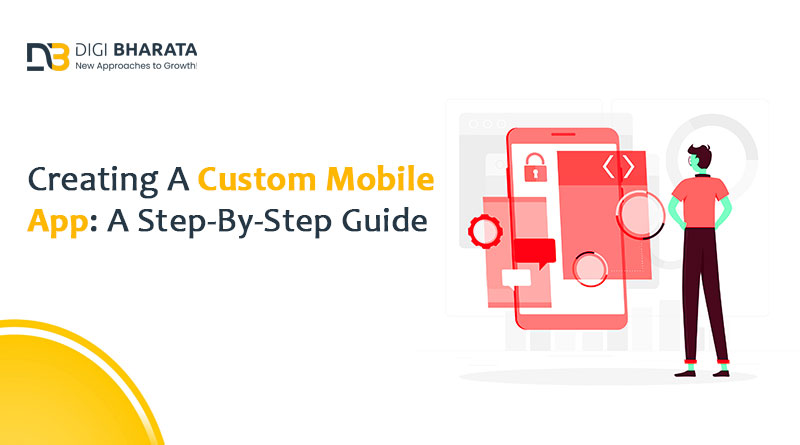In 2025, app development continues to be a thriving field, offering countless opportunities for individuals and businesses to bring their innovative ideas to life. With the ever-growing demand for mobile applications and the advancement of technology, creating an app has become an integral part of establishing a digital presence and reaching a wider audience.
Developing an app in 2025 requires a systematic approach that combines creativity, technical expertise, and a deep understanding of user needs. The process begins with a clear and well-defined app idea, encompassing its purpose, target audience, and unique selling points. Conducting thorough market research and competitor analysis ensures that the idea has viability and the potential for success in a competitive app landscape.
With the technical requirements determined, the development phase begins. Hiring a Custom Mobile Application Development Company or acquiring the necessary coding skills is essential for bringing the app to completion. The choice of programming languages and frameworks, such as Swift or Kotlin, for mobile app development plays a vital role in achieving the desired functionality and performance.
Table of Contents
How to Develop a Custom Mobile App
Mobile applications hold the power to digitally transform your business and provide greater reach. To provide a boost to your organization, you must understand the steps involved in the development of a seamless app.
Here is a mobile app development guide to help you in a much more profound manner.
Defining Goals
Defining goals is a vital first step when embarking on mobile app development in 2025. Setting up your goals provides direction and purpose for the app and guides every subsequent decision throughout the development process. Firstly, you must determine the purpose of your mobile app. This will help establish the value proposition and unique selling points of your app.
Setting up measurable goals becomes crucial because they help save time and resources. The goals you set must align with the requirements of the end-users and hence drive productivity for the business. The goals which you must set should include;
- Number Of Downloads
- User Retention Rate
- Revenue Generated
- Establishing Specific Metrics
Additionally, defining your goals in app development is about understanding the purpose, target audience, business objectives, and measurable outcomes you aim to achieve. This clarity sets the foundation for a focused and purposeful development journey, increasing the likelihood of creating an app that resonates with users and meets your desired objectives.
Researching Market
Once you decide on your goals, ensuring deep market research is important for the successful development of your app. Validating the app idea is very important because you can’t keep it in theory.
If you don’t perform market research, then it will be a waste of your valuable time, resources, and money. You can conduct market research by;
- Creating surveys
- Conducting interviews
- Running focus group
- Finding competition
- Focusing on the customer experience
For an existing organization, focusing on current customers is great for app building and conducting research. If you are taking your first step, then connecting with your target audience becomes an essential part.
Consider App Features
Considering app features is a vital aspect of custom mobile app development in 2025. Features determine the functionality and user experience of the app, directly impacting its value and appeal to users. When contemplating app features, it’s essential to focus on three key aspects.
- Core Features
Prioritize core features that align with the app’s purpose and solve the target audience’s pain points. These features should be the primary drivers of user engagement and provide the main value proposition of your app.
- App Usability
Secondly, think about usability and intuitiveness. Aim for a seamless and user-friendly experience by incorporating features that are easy to understand and navigate. Implement intuitive gestures, clear navigation menus, and interactive elements that enhance the overall user experience.
- Consider Innovation
Lastly, consider adding innovative features that differentiate your app from competitors and provide unique value. These could be cutting-edge technologies such as augmented reality, artificial intelligence, or voice recognition. Innovative features can help attract attention, create a memorable user experience, and potentially drive user acquisition and retention.
Creating Wireframe
Creating a wireframe is a crucial step in app development, as it serves as a visual representation of the app’s layout and functionality. The wireframe acts as a blueprint, providing a skeletal structure that outlines the various screens, elements, and user interactions within the app.
During the wireframing process, the focus is on creating a simplified and low-fidelity representation of the app’s design. This allows you to concentrate on the app’s structure and user flow without getting distracted by intricate details or visual aesthetics. By stripping away unnecessary elements, you can focus on the core functionality and user experience, ensuring a clear and intuitive app design.
Wireframes serve as a communication tool between stakeholders, including designers, developers, and clients, enabling effective collaboration and feedback. They provide a shared understanding of the app’s layout and functionality, allowing for early identification of potential issues and improvements.
Overall, creating a wireframe helps streamline the app development process, enhance usability, and ensure that the final product meets user expectations. It provides a solid foundation for designing and developing an app that is intuitive, user-friendly, and aligned with your goals and objectives.
Select Development Method
When choosing a development method for app development, it’s essential to consider factors such as project requirements, resources, timeline, and team expertise.
There are primarily two popular methods:
Native App Development
This method involves developing separate apps for each platform (e.g., iOS and Android) using platform-specific programming languages (Swift or Objective-C for iOS, Java or Kotlin for Android). Native apps offer high performance, access to device features, and a better user experience but require separate development and maintenance efforts.
Cross-Platform App Development
Cross-platform frameworks like React Native, Flutter, or Xamarin allow developers to build apps that can run on multiple platforms using a single codebase. This method offers faster development, code reuse, and cost-effectiveness. However, it may have limitations in accessing certain platform-specific features and may not match the performance of native apps for complex functionalities.
Choosing the development method depends on your project’s specific requirements, budget, time constraints, and target audience. Consider consulting with a custom mobile application development company to evaluate the pros and cons of each approach and determine the best fit for your app.
Consider Technical Specification
Considering technical specifications is crucial in app development to ensure that the app meets the requirements and functions smoothly. Technical specifications involve determining the platform (iOS, Android, web), programming languages, frameworks, and libraries to be used.
First, identify the target platform and its specific requirements, such as iOS or Android version compatibility. This helps determine the programming languages, such as Swift, Kotlin, or JavaScript, to be used for development.
Next, choose the appropriate frameworks and libraries that align with the app’s functionality and goals. Consider factors like performance, scalability, and community support when selecting these tools.
Set Up Milestones
Setting up milestones is crucial in app development to break down the project into manageable phases and track progress effectively. Milestones represent specific targets or achievements that need to be accomplished within a defined timeframe. By setting milestones, you can create a roadmap for development, allocate resources efficiently, and ensure timely delivery.
Each milestone should have clear objectives, tasks, and deliverables associated with it. Regularly reviewing and evaluating milestone completion helps identify any deviations or challenges and allows for timely adjustments to keep the project on track. Ultimately, milestones provide a structured approach to app development, enhancing productivity and ensuring project success.
Begin Development
Beginning the development phase is an exciting step in app development. With the groundwork laid during the planning and preparation stages, it’s time to turn your vision into reality. During development, the focus shifts to coding, implementing features, and creating the app’s functionality according to the defined requirements.
Collaborate closely with your development team, maintain open communication channels, and adhere to agile development practices to ensure a smooth workflow. Regularly test and debug the code, integrating feedback from users and stakeholders. By initiating the development phase, you embark on a journey to transform your app idea into a fully functional and user-friendly product.
QA Testing
QA testing is a critical phase in app development that ensures the app’s functionality, usability, and performance. It involves conducting comprehensive testing to identify and fix any bugs, errors, or usability issues before releasing the app to users. QA testing includes various types of testing, such as functional testing, usability testing, performance testing, security testing, and compatibility testing.
Thoroughly testing the app across different devices, operating systems, and scenarios helps ensure a seamless and satisfying user experience. By investing time and resources in QA testing, you can enhance the app’s quality, reliability, and overall success in the market.
Deployment
Deployment is the final phase of app development, where the app is prepared for release and made available to users. It involves packaging the app, uploading it to the respective app stores, and making it accessible to the target audience. Prior to deployment, it’s crucial to ensure that all necessary certifications, agreements, and guidelines are met.
Additionally, optimizing the app’s metadata, including app descriptions, screenshots, and keywords, enhances its discoverability. Thoroughly testing the app on various devices is also essential to ensuring a smooth user experience post-deployment. The successful deployment marks the culmination of the development journey and opens the door for users to benefit from your app.
Conclusion
In a nutshell, developing a custom mobile application in 2025 involves a systematic and well-defined process that requires careful planning, design, development, and testing.
By following the step-by-step guide provided above, you can navigate through the intricacies of the development process and create a successful mobile application that meets your specific requirements.
Remember to embrace the latest technologies and trends while keeping your target audience in mind.





















+ There are no comments
Add yours